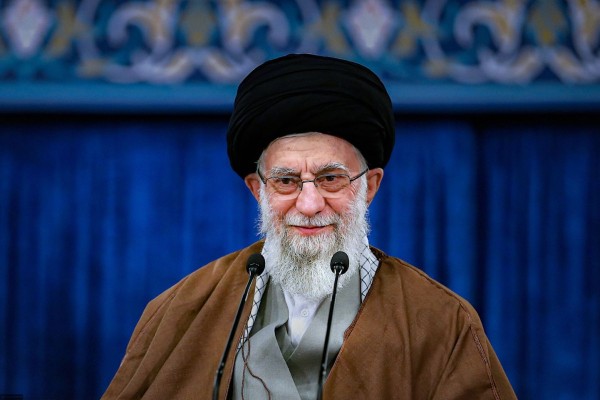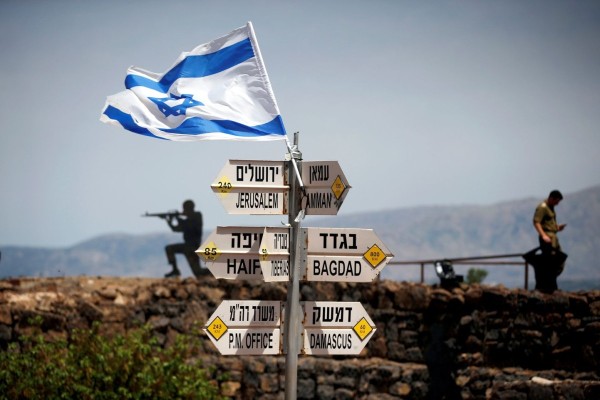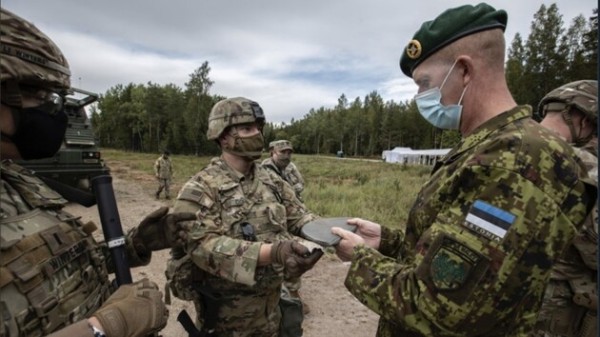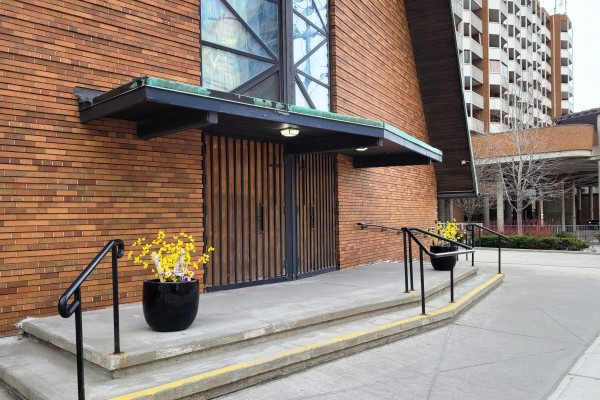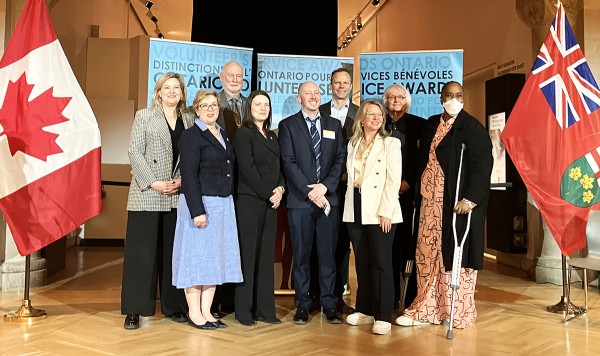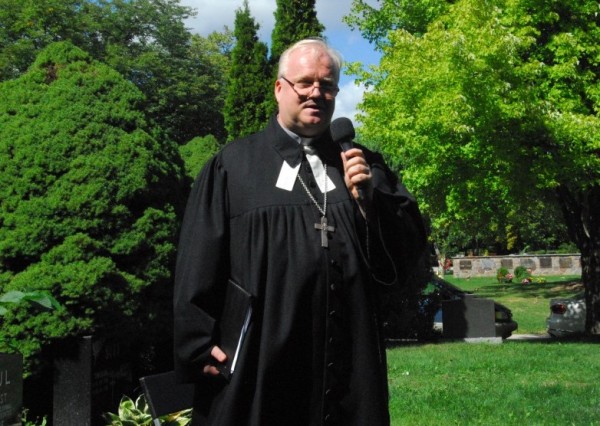San Francisco, November 5, 2016
Thank you, Marju, for the introduction and invitation to address the council. Ladies and gentlemen, distinguished guests, and friends of Estonia, it’s an honor for me to be here this morning among so many dignified leaders and representatives of the Estonian-American community.
I’ve been in Tallinn for a close to a year now and have gained quite an appreciation for all that Estonia has accomplished over the last quarter century. And I know that the Estonian-American community has played a vital role in that by first keeping the memory of a vibrant, independent Estonian nation alive during the dark years of the Soviet occupation and then, once the walls fell, rushing in to reestablish and strengthen the links that bind our two countries so tightly together.
I’ve been in the U.S. Foreign Service for over thirty years and have spent much of my career working with our close European allies, including Germany and the U.K., but the relationship with Estonia is unlike anything that I’ve experienced elsewhere. There is obviously a big difference in the sizes of our countries, however, that doesn’t limit our relationship. In fact, Estonia and the U.S. are close partners on almost all international issues of importance. Whether the subject is regional or global security, free trade, or international rule of law, our two countries tend to think alike because of the fundamental values we share. This is true for all three Baltic countries, too: what drives our work together is our shared commitment to democratic values and basic human freedoms.
Estonians value just as much as Americans the hard-fought freedoms that form the foundation of our societies and understand the need to protect them not only in our countries, but also in those places, such as Ukraine, where people are demanding the same rights and liberties free from outside pressure and influence. That is the message that President Obama delivered when he visited Tallinn two years ago and it is very much applicable today.
When I began my career in the former East Germany, I never expected to witness as many profound changes in Europe as we’ve seen. Of course, we had confidence in our policies and we knew the vision of a Europe whole, free and at peace was the only path to a prosperous future, but it seemed far off and maybe not achievable during my lifetime. Looking back at the past quarter century, we have come a long way to achieving that lofty goal. Certainly the progress attained in countries such as Estonia is irreversible. Even so, this is among the most challenging times in Europe since the end of the Cold War.
As I put this into the U.S.-Estonia perspective, I’d say there are three important aspects that will define our relationship over the next decade.
First, Estonia is a capable ally and partner, for the United States bilaterally and multilaterally through the EU and NATO.
After re-independence in 1991, Estonia pursued policies to integrate as quickly as possible into Western institutions. This meant undertaking meaningful, and at the time painful, reforms in order to join organizations such as the WTO, EU, NATO, OSCE, and OECD. It also helped to have neighbors such as Finland and Sweden making early investments and providing new markets as trade quickly shifted away from the former Soviet republics.
The result is that Estonia is as solid a partner and ally as we have. Estonia’s interests and values line up with ours exceedingly well. Estonia has consistently proven itself to be a committed ally by spending more than 2% of GDP on defense and through contributions to missions in Iraq and Afghanistan or more recently by contributing to the EU mission in Mali, the UNIFIL mission in Lebanon and by training Ukrainian Special Forces.
Estonia is also exporting its successful transition experience, including the pioneering e-governance and cyber security platforms, to Eastern Partnership countries. Estonia’s commitment to NATO has made a lasting impression on me and my staff, and is something that the many visitors we receive from Washington quickly come to admire and respect as well.
Second, Estonia’s geography means that security will be the dominant issue for the foreseeable future.
Let’s be clear, Estonia is concerned about an unpredictable and aggressive Russia and this concern has merit, not only because of the Soviet occupation. Often my Estonian interlocutors will point back to the Bronze Soldier riots and cyberattacks in 2007 or the invasion of Georgia in 2008 as an inflection point for a more outwardly combative Russian state. Crimea and Ukraine are only the latest extension of that.
It is quite obvious to anyone who can count that the Russian military is an order of magnitude larger than those of the Baltic States and the exercises they’ve conducted in the region have been much larger and more provocative than anything NATO would ever contemplate. Additionally, Russian behavior such as airspace violations, flying without transponders or what we’ve encountered at sea, run the risk of accidents that could lead to an escalation in the region.
Recognizing the change in Russian posture, the United States and NATO have responsibly increased their presence in Estonia and the other Baltic countries. The United States has rotated troops, planes and ships to maintain an almost continuous presence that unequivocally demonstrates our commitment to our NATO allies. We are also helping Estonia, through the European Reassurance Initiative, to increase its own national defense capabilities through infrastructure improvements at the Central Training Area as well as at the Amari Air Base and through augmenting Estonia’s defense acquisitions, such as providing $33 million worth of Javelin anti-tank missiles. This bilateral engagement will continue even as NATO’s enhanced Forward Presence takes shape, with the UK as the lead framework nation in Estonia.
As President Obama said in Tallinn, “there are no old members or new members, no junior partners or senior partners in NATO -- there are just Allies, pure and simple. And we will defend the territorial integrity of every single Ally.” We demonstrate this every time we have an air, land or naval exercise in Estonia and of course with the ongoing U.S. troop presence in Tapa.
Russia’s actions have called into question everything we’ve worked towards since the end of WWII and Estonia is on the front line of this struggle. Any wavering or destabilization would have ripple effects that would directly threaten U.S. interests and prosperity.
My third takeaway from my time in Tallinn is how Estonia’s capacity to innovate and adapt have set it up for success in the digital economy.
Estonia’s digital government really makes the country stand out from everyone else in Europe, with virtually all government services available to citizens online via an interconnected e-government platform. You may have seen that I recently became an Estonian e-Resident myself. Beyond the many lessons that other countries, including the United States, can draw directly from Estonia’s e-governance, the reliance on e-services has required that Estonia develop the capacity to keep the services secure. Estonia quickly institutionalized the lessons learned from the 2007 cyber-attacks and set a model for others to follow through national cyber security strategies, infrastructure, and cyber technologies needed to protect those services.
We use this innovation to our advantage in the security sector as well. Since the signing of the U.S.-Estonian Cyber Partnership Agreement in December 2013, cyber coordination between our nations has increased significantly. Our Embassy’s cyber team, which includes representatives from the Departments of State and Defense, the FBI and Secret Service, are working on the full range of cyber initiatives. Secretary of Defense Ash Carter recognized the importance of cyber defense during his visit to the NATO Cooperative Cyber Defense Center of Excellence last June when he met with Ministry of Defense and CCDCOE officials, and cyber cooperation is included on the agenda of almost every high-level engagement between the U.S. and Estonia in both Tallinn and Washington.
Like Estonia, the United States sees the growing importance of digital technologies to economic growth and competitiveness in today’s world. We share a belief that the free flow of data is key to unlocking innovation. And we’re hopeful that the European Digital Single Market, an undertaking being led by Commissioner Andrus Ansip, will expand transatlantic trade and our shared digital economy.
And of course we are pleased to see growing collaboration between the American and Estonian private sectors. Tiny Estonia is now on the map for many venture capitalists from this neck of the woods. Just a few weeks ago, Draper Associates led a 2.6 million dollar investment round in Funderbeam, an Estonian start-up that has launched an online investment platform for start-ups. Many high-tech companies that have received American financing have gone on to open up U.S. offices while maintaining important jobs in Estonia. So we’re seeing a virtuous circle that is sustaining high quality job growth on both sides of the Atlantic.
To have a broader impact across Estonia’s economy, this dynamic spirit of entrepreneurship and embrace of technology needs to be extended to all corners of the country, and to the more traditional manufacturing and industrial firms. Our Embassy is committed to supporting the Estonian government in this effort.
Of course, Estonia does still have some internal challenges that the government and all of its friends and partners are trying to address. There is certainly a role for the Estonian-American community to help in this endeavor as well.
I’ve had the opportunity to travel all around the country and visit very many different communities and it is a simple fact that development has been uneven and prosperity unequally shared. This is an issue for many, many communities throughout mainland Estonia and the islands, but it really manifests itself in a unique way in Ida Virumaa, through the prism of ethnic segregation and isolation. Given Russia’s vow to protect its compatriots abroad and its sustained efforts to divide communities, this also presents a unique security challenge for Estonian state institutions.
In response, we’ve partnered as much as we can with Estonian educational institutions, non-governmental organizations and other like-minded partners to bring in as many skills-based programs as possible, focusing primarily on English language learning, entrepreneurship, science and technology, and civic activism and leadership, to empower youth on their path to successful futures in Estonia and Europe.
I’m optimistic about Ida Virumaa, which I do not see as one of those many places in Europe where history seems to prevent progress. In fact, I see just the opposite. I see communities and people coming together if just given a chance.
It has been an incredible first year for me in Estonia. One of the many perks of being Ambassador is that I’m invited to experience a wonderful variety of Estonian culture. I’ve had the opportunity to hear folk music at the Viljandi Folk Music Festival, enjoy the cuisine at the Estonian food festival in Saaremaa, give remarks at many schools, tour the Ukrainian and Russian cultural centers, and meet current and future leaders from each of Estonia’s 15 counties. One the most memorable experiences from my time in Estonia was:
In conclusion, I see these themes as continuing throughout my two years in Estonia: Estonia as a rock-solid ally in an environment where we must all deter an increasingly belligerent Russia. And Estonia as an innovator, helping Europe and the world make the most of the digital age. And the United States will remain Estonia’s closest partner and friend in both scenarios. Thank you.
Ambassador James D. Melville to the Estonian American National Council (1)
Eestlased USAs | 07 Nov 2016 | EWR
Viimased kommentaarid
Kommentaarid on kirjutatud EWR lugejate poolt. Nende sisu ei pruugi ühtida EWR toimetuse seisukohtadega.
A feel good speech, by a career diplomat/ political appointee. No surprises here
Eestlased USAs
TRENDING






